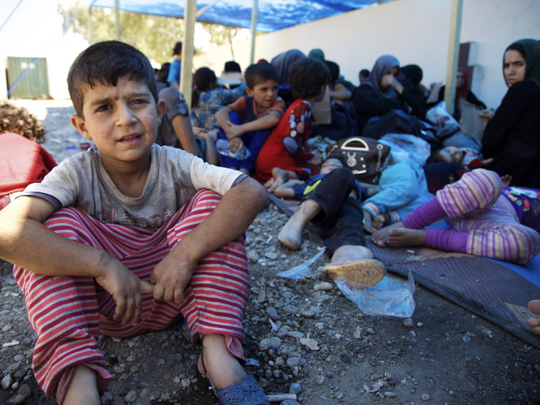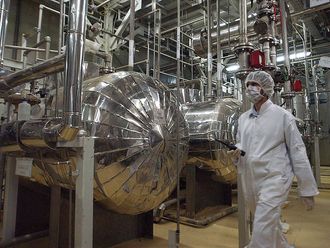
Tal Afar: “We were living in horror and thinking of death at every moment,” Haj Mahmoud, the retired teacher, said. He decided to make a run for it with his wife and four sons and has been living with them at the Hammam Al Alil camp ever since.
Residents fleeing the Daesh-held city, spoke of escaping in the middle of the night to avoid the militants, who shot anyone caught trying to escape.
“We escaped at night, during evening prayers,” said 20-year-old Khalaf. “All the Daesh fighters were praying at the mosque, so they didn’t catch us. If they had, they would’ve sprayed bullets into our heads”, like they did his neighbours.
Khalaf said he fled five weeks ago with his two children and 40 other people from his village of Kisik. They walked for a full day to reach safety at a Peshmerga checkpoint.
“People in Kisik are completely trapped,” he said. “Those left tell us there’s no water, no food, no bread, no medicines — nothing.” Up until he left, 1kg bag of rice cost roughly $40 (Dh146.9).
Sultan Abdallah and his family escaped Kisik with Khalaf.
They are now all living at the Al Salamiya refugee camp.
“We had spent three months with no food,” said Abdallah. He still has a brother, a cousin and an uncle left in Kisik, but he has not been able to speak to them since he left.
“You were forced to work for the militants to feed your family,” Abdallah said.
Saad Al Bayati fled Tal Afar five days ago with his family, fearing aerial bombardments. He is now living in the Hammam Al Alil camp with his wife and sick baby.
“I heard what happened in Mosul’s Old City, where whole families were killed by air strikes,” Al Bayati said.
“I didn’t want to see my family buried under the rubble.”
Earlier this year, Iraqi forces laid siege to Mosul, the birthplace of Daesh, before launching an intense assault to oust the militants.
The offensive sparked an exodus of the city’s residents, caught between Daesh’s crippling grip and air strikes from a US-led international coalition assisting Iraqi forces in the fight against Daesh.
Hundreds of civilians were killed while trying to escape to government-held lines, caught in the crossfire or gunned down by Daesh snipers.
The militants want civilians to remain in areas under their control to use them as human shields.
Bodies laid in the streets for days on the front lines of the battle, as Daesh militants prevented families from burying their dead to use as examples to others who wished to flee.
In total, over 700,000 people fled Mosul in one of the largest exodus of civilians in modern Iraqi history.
Iraqi and UN aid agencies struggled to cope with the influx of people and hospitals and makeshift clinics were unable to treat the majority of the injured.
Jonathan Henry, MSF emergency coordinator described “huge human suffering” in Mosul.
“This is a massive population that has been traumatised from a very brutal and horrific conflict,” he said.
The United Nation’s International Organisation for Migration (IOM), estimates that about 10,000 to 40,000 people are left in Tal Afar and surrounding villages. Iraqi commanders say the number of people left inside the city itself, including militants and their families, is closer to 5,000.
Aid groups say they are not expecting a huge civilian exodus as most the city’s former residents have already left.
On Sunday, 2,760 people fleeing Tal Afar and the surrounding area were processed by the IOM before being sent on to displaced persons’ camps.











